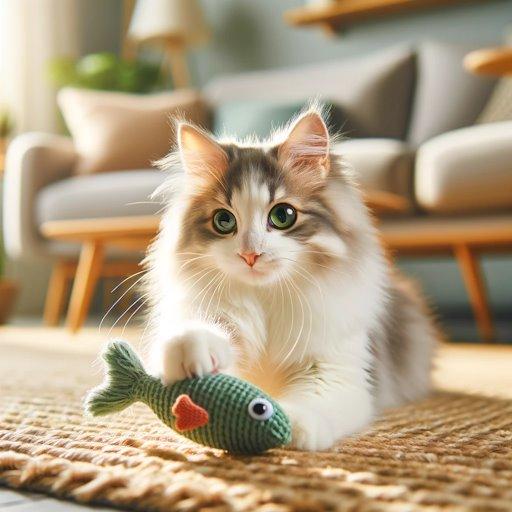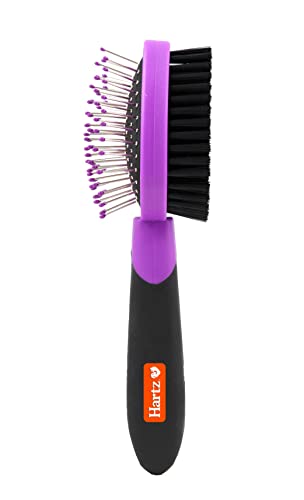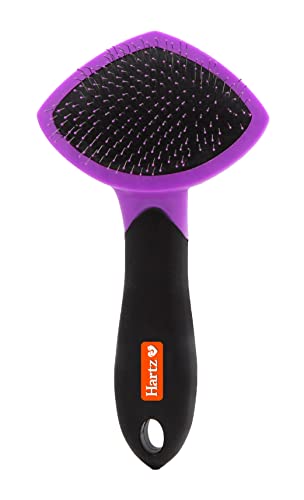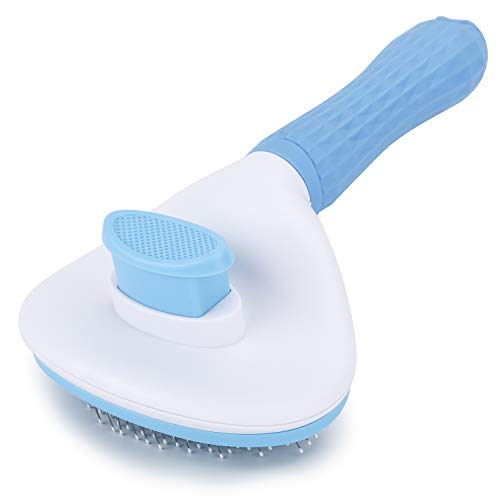The scene is all too familiar: you're petting your beloved feline, enjoying the soft purrs and the rhythmic kneading, when your hand encounters a snag. A knot. A mat. The dreaded tangle. Or perhaps you're constantly battling a blizzard of cat hair that coats every surface of your home. Maybe your cat transforms into a hissing, spitting wildcat at the mere sight of a brush. Whatever the grooming challenge, the struggle is real for many cat owners. Many cat brushes on the market promise miraculous results, but often fall short, leaving both cat and owner frustrated. The brushes can be ineffective, uncomfortable for the cat, or simply not suited to the specific needs of their coat.
However, the solution isn't to give up on grooming altogether. It's about finding the right tool for the job. The right cat hairbrush is an essential tool for maintaining a healthy, tangle-free coat, reducing shedding, and fostering a positive grooming experience for both cat and owner. This article will delve into the world of cat brushes, exploring the different types, how to choose the perfect one for your feline friend, and mastering the techniques for a successful and enjoyable grooming session.
To understand why choosing the right brush is so crucial, we first need to appreciate the intricacies of cat coats. Cat hair, like human hair, has a complex structure. Each hair shaft consists of three layers: the cuticle (the outermost layer, made of overlapping scales), the cortex (the middle layer, containing pigment), and the medulla (the innermost layer, which may be absent in fine hairs). Cats have two main types of hair: guard hairs and undercoat. Guard hairs are the longer, coarser hairs that form the outer layer of the coat, providing protection from the elements. The undercoat is the softer, denser layer of fur beneath the guard hairs, providing insulation.
The type of coat a cat has significantly impacts their grooming needs. Short-haired cats, like Siamese and American Shorthairs, have a relatively low-maintenance coat. Their guard hairs are short, and their undercoat is typically less dense than that of longer-haired breeds. While they still shed, they are less prone to matting. Medium-haired cats, such as Maine Coons and Ragdolls, have a longer, plusher coat with a more substantial undercoat. They require more frequent brushing to prevent tangles and remove loose fur. Long-haired cats, like Persians and Himalayans, possess a luxurious, flowing coat that demands significant grooming commitment. Their long guard hairs and dense undercoat are highly prone to matting and require daily brushing.
Curly or wavy-haired cats, like the various Rex breeds (Cornish Rex, Devon Rex), have a unique coat texture. Their fur is often short and close-lying, with a distinctive wave or curl. While they may not shed as much as other breeds, they still require regular grooming to prevent matting and distribute skin oils. And finally, hairless cats, such as the Sphynx, may seem like the ultimate low-maintenance option, but they actually require specialized skin care. Because they lack the protective layer of fur, their skin is more exposed to the elements and can become oily or dry. Regular bathing and moisturizing are essential.
Regardless of coat type, regular brushing offers a multitude of benefits for all cats. It removes loose hair, preventing it from being ingested during self-grooming, which reduces the formation of hairballs. It helps to prevent mats and tangles, which can be painful and lead to skin irritation. Brushing distributes natural oils throughout the coat, promoting a healthy shine and preventing dryness. It also stimulates the skin, improving circulation and promoting healthy hair growth. Regular brushing allows you to check for any lumps, bumps, skin irritations, or parasites, facilitating early detection of potential health issues. And perhaps most importantly, brushing can be a wonderful bonding experience for you and your cat, strengthening your relationship and creating a positive association with grooming. Neglecting to brush, on the other hand, can create big problems for you and your furry friend.
The sheer variety of cat brushes available can be overwhelming. Understanding the different types and their intended uses is key to making an informed choice. Bristle brushes are a good all-around option, particularly for short to medium-haired cats. They come in a variety of bristle types, including natural bristles (often made from boar hair) and synthetic bristles (usually nylon). Natural bristles are generally softer and gentler, making them a good choice for cats with sensitive skin. Synthetic bristles can be firmer and more effective at removing loose hair. Bristle brushes are excellent for smoothing the coat, distributing oils, and adding shine.
Slicker brushes are characterized by their fine, wire bristles, often slightly bent at the tips. They are particularly effective at removing loose undercoat and detangling medium to long hair. Slicker brushes are a staple for many cat owners, but it's crucial to use them gently to avoid scratching or irritating the cat's skin. Apply light pressure and brush in the direction of hair growth.
Undercoat rakes are designed specifically for cats with thick undercoats. They have long, widely spaced teeth that penetrate deep into the fur to remove dead undercoat and prevent mats. Undercoat rakes are particularly helpful during shedding season, when cats are losing their winter coat. They can significantly reduce the amount of loose fur around the house.
De-shedding tools, such as the popular FURminator, are designed for heavy shedders. These tools have fine-toothed blades that effectively remove loose undercoat. While they can be incredibly effective at reducing shedding, it's important to use them with caution. Overuse can damage the coat or irritate the skin. It's generally recommended to use de-shedding tools no more than once or twice a week.
Combs are an essential part of any cat grooming kit. They come in a variety of tooth spacings, from fine-toothed combs for removing fleas and debris to wide-toothed combs for detangling. Metal combs are generally more durable than plastic combs and are less likely to generate static electricity. Combs can be used for a variety of purposes, from removing small mats to smoothing and finishing the coat after brushing.
Grooming gloves are a great option for cats who dislike traditional brushes. These gloves have rubber or silicone nodules on the palm and fingers, which gently massage the cat's skin while removing loose fur. Many cats find grooming gloves to be much less intimidating than brushes, and the petting sensation can be quite soothing. Grooming gloves are suitable for all coat types and can be a good way to introduce a cat to grooming.
Other specialized brushes exist for specific needs. Mat breakers, for example, are designed to carefully cut through mats without pulling on the skin. Pin brushes, with their rounded-tip pins, are good for gently detangling and fluffing the coat.
Choosing the right brush isn't just about matching the brush type to the coat type; it's about considering your cat's individual needs and preferences. Refer back to the recommendations for each coat type, but don't be afraid to experiment. A good starting point is to create a concise chart that has coat type, and ideal brush.
Your cat's temperament also plays a significant role in brush selection. If your cat is fearful, sensitive, or generally dislikes being brushed, start with a gentler option, such as a grooming glove or a soft bristle brush. Introduce the brush slowly and gradually, associating it with positive reinforcement (treats, praise).
Age and health conditions should also be taken into account. Kittens have delicate skin and fur, so a soft bristle brush or a grooming glove is best. Senior cats may have arthritis or sensitive skin, requiring a gentler approach. If your cat has any skin conditions, such as allergies or infections, consult with your veterinarian for recommendations on the best type of brush to use. They may recommend a specific type of brush or advise avoiding brushing altogether until the condition has healed.
Don't be afraid to try different brushes to find what works best for your cat. You might start with a less expensive option to see if your cat tolerates it before investing in a higher-end brush. Reading reviews from other cat owners can also be helpful, as they can provide insights into the effectiveness and durability of different brushes. Look for reviews that specifically mention your cat's breed or coat type.
Once you've chosen the right brush, mastering the art of brushing is essential for a positive grooming experience. The key is to create a calm and positive environment. Choose a quiet location where your cat feels comfortable and secure. Minimize distractions, such as loud noises or other pets. Have treats and toys readily available to reward your cat for their cooperation.
Before you even start brushing, let your cat sniff and investigate the brush. This will help them become familiar with the tool and reduce any anxiety. Start with short, gentle strokes in areas where your cat enjoys being petted, such as their chin, cheeks, or back. Avoid brushing sensitive areas, like the belly or tail, until your cat is more comfortable with the process. Gradually increase the duration and area of brushing as your cat becomes more accustomed to it.
Always brush in the direction of hair growth. This will help prevent pulling and discomfort. Use light, even pressure, especially with slicker brushes and undercoat rakes. Avoid digging the bristles or teeth into the skin. For slicker brushes, use a light, lifting motion to remove loose fur without scratching the skin. For undercoat rakes, use long, smooth strokes, working your way through the coat in sections.
Mats can be a challenge, but it's important to address them gently. For small mats, try to work them out with your fingers or a wide-toothed comb. If the mat is too stubborn, you can use a mat breaker tool, but be extremely careful to avoid cutting the skin. If the mat is severe or your cat is resistant, it's best to seek professional help from a groomer or veterinarian. The best way to deal with mats is to prevent them in the first place through regular brushing.
The frequency of brushing will depend on your cat's coat type. Short-haired cats may only need to be brushed once or twice a week, while long-haired cats may require daily brushing. During shedding season, you may need to brush more frequently. Start with short grooming sessions, just a few minutes at a time, and gradually increase the duration as your cat becomes more comfortable. Always end the grooming session on a positive note, with treats, praise, or playtime. This will help your cat associate grooming with positive experiences.
Even with the best intentions, grooming challenges can arise. Some cats simply hate being brushed, no matter what type of brush you use. For these cats, desensitization and counter-conditioning can be helpful. Start by simply touching your cat with the brush without actually brushing. Reward them with treats and praise. Gradually increase the duration of the touch, eventually progressing to short, gentle strokes. If your cat continues to resist, try alternative grooming tools, such as grooming gloves or grooming wipes. In some cases, it may be necessary to consult with a veterinarian or a professional groomer for assistance.
Excessive shedding can be a concern for many cat owners. While some shedding is normal, excessive hair loss can be a sign of an underlying issue. Dietary factors, such as a deficiency in omega-3 fatty acids, can contribute to shedding. Environmental factors, such as dry air, can also play a role. If you notice excessive shedding, consult with your veterinarian to rule out any medical causes. They may recommend dietary changes or supplements to improve your cat's coat health.
Hairballs are a common problem for cats, especially long-haired breeds. Regular brushing is the most effective way to prevent hairballs, as it removes loose fur before it can be ingested. There are also hairball control diets and treats available that can help reduce hairball formation.
Finally, don't forget to clean your brushes regularly. Remove any loose fur after each grooming session. Wash the brushes with warm water and mild soap as needed, and allow them to air dry completely. This will help prevent the spread of dirt, bacteria, and parasites.
Choosing the right brush and mastering proper brushing techniques are essential for maintaining a healthy, tangle-free coat and a happy cat. Regular brushing not only keeps your cat looking their best but also strengthens your bond and provides an opportunity to monitor their overall health. It's an investment in your cat's well-being, a way to show your love and care in a tangible way. So, embrace the art of brushing, and watch your feline friend flourish with a radiant, healthy coat, and a purrfectly contented demeanor. The benefits extend far beyond just a beautiful coat; it's about a healthier, happier cat and a stronger bond between you and your beloved companion.






